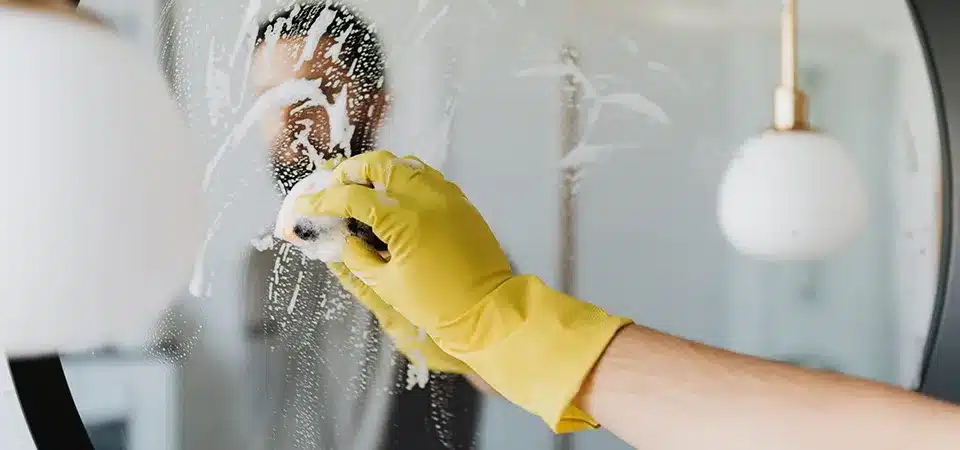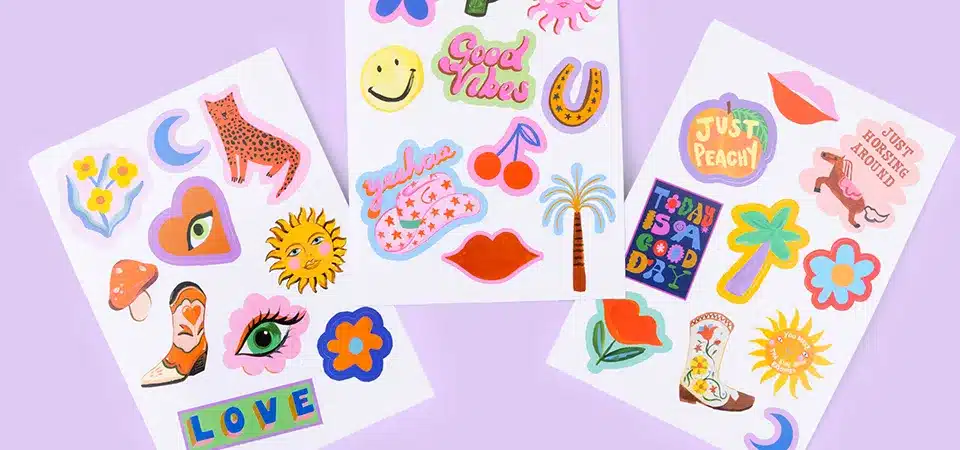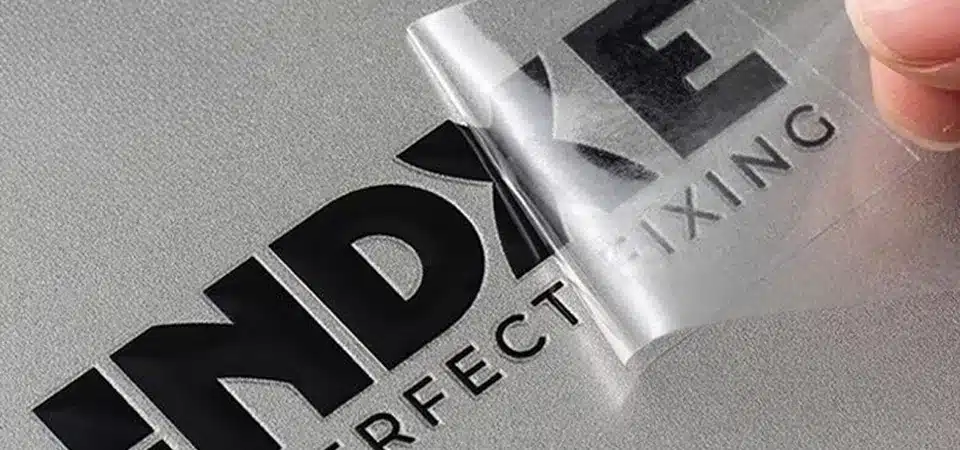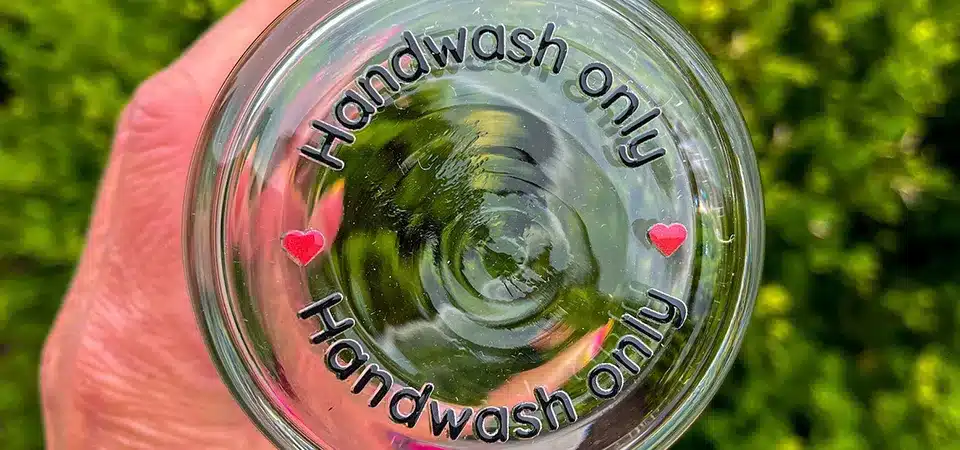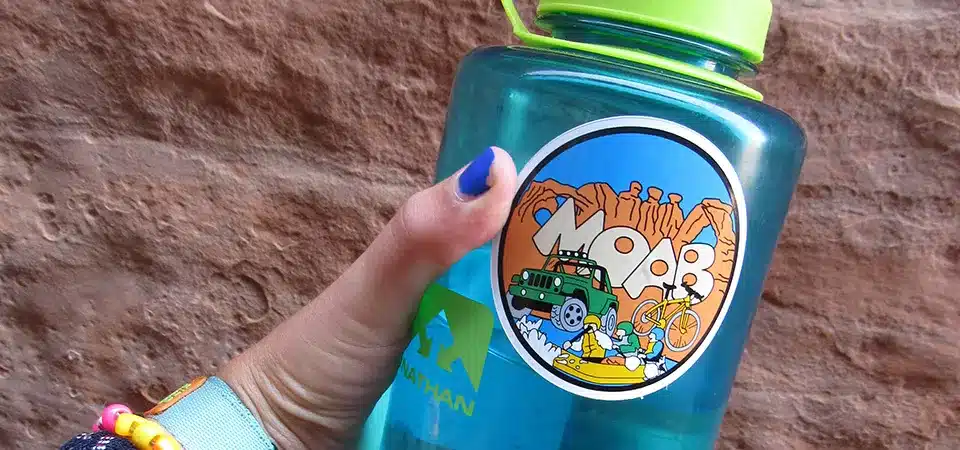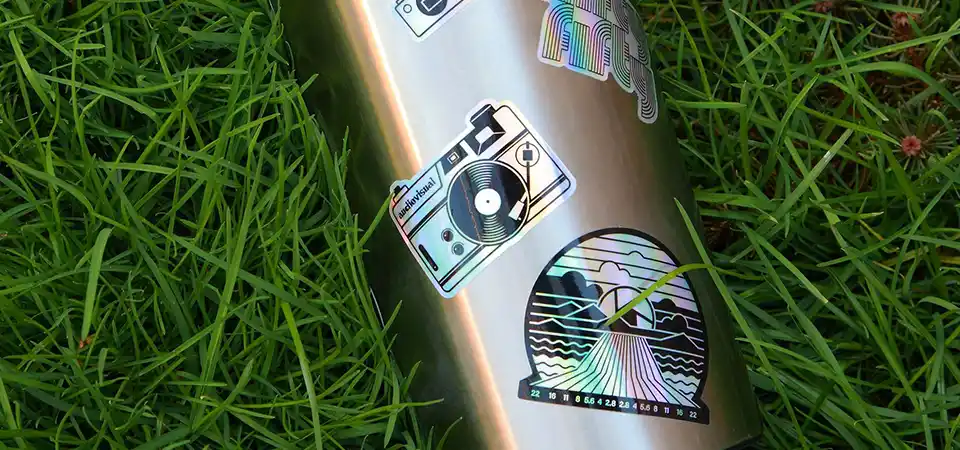That sticky gunk left by a sticker is ruining your mirror. Scrubbing it can leave permanent scratches. I'll show you how to remove it safely and completely.
Start with gentle methods like peeling, warm soapy water, or a hairdryer. For tougher residue, use rubbing alcohol or an oil-based solution. A plastic scraper or razor blade (used carefully) can physically remove the gunk. Always test a small area first to ensure safety.
I've spent years working with adhesives for my sticker business. I know exactly what makes them stick and, more importantly, what makes them un-stick without causing damage. The secret is to start with the gentlest method that might work and only escalate if needed. This layered approach protects your mirror's surface while ensuring you get rid of every last bit of sticky residue. Let's go through the steps one by one to get your mirror looking perfect again.
Should you try to peel it off first?
You see a corner of the sticker lifting. Your first instinct is to rip it off fast. But this often leaves the worst residue behind, making a bigger mess.
Yes. Always try peeling the sticker off first. Go slowly and pull at a low, sharp angle. If the sticker tears or the residue starts to separate, stop immediately and move to another method.
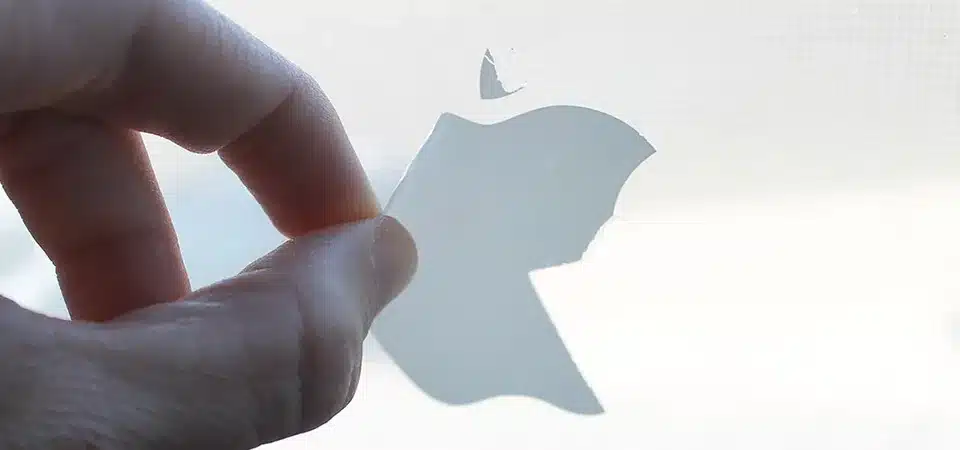
The first step is always the most hopeful one: just peeling it off. The trick is how you do it. Don't pull straight up and away from the mirror. Instead, get a fingernail or a plastic scraper under one edge and pull back on the sticker at a very low, almost flat angle. This technique puts the stress on the adhesive's bond with the glass, encouraging it to lift cleanly. Pulling straight up just stretches the sticker material, which is what causes it to tear and leave that stubborn sticky layer behind. I always tell my sticker clients that our removable labels are designed to peel this way. But for permanent adhesives, like those on price tags, pulling slowly is even more critical. If you feel a lot of resistance or see the residue starting to separate and stay on the mirror, it’s time to stop. Forcing it from here will only make the cleanup job harder.
Can hot soapy water really work?
You don't want to use harsh chemicals on your mirror. But you doubt simple soap and water can tackle this sticky mess. It's surprisingly effective for certain glues.
Yes, for many water-based adhesives, hot soapy water is very effective. The heat softens the glue and the soap helps break down its structure, allowing you to wipe it away easily.
This is always my second step because it's so safe and often works wonders. Many common stickers, especially paper ones, use water-based adhesives. This method is designed specifically to defeat them. The heat from the water softens the gummy residue, making it less stubborn. The dish soap acts as a surfactant, which is a science-y way of saying it breaks down the oils and polymers in the glue, lifting it from the glass surface. My process is simple: mix a few drops of dish soap into a bowl of hot (not boiling) water. Soak a soft cloth in the solution, wring it out so it's not dripping all over, and then just press it onto the sticky spot. Let it sit there for a few minutes. This gives the heat and soap time to work their magic. After that, you can usually wipe the residue away with a gentle circular motion and a clean part of the cloth.
Is using a hair dryer a good idea?
You need to loosen that stubborn adhesive. You've heard heat works, but you're scared of cracking your mirror. There is a safe way to do it for great results.
Yes, a hair dryer is an excellent tool. Use it on a low to medium setting to gently warm the sticker or residue. This softens the adhesive, making it much easier to peel or scrape off.
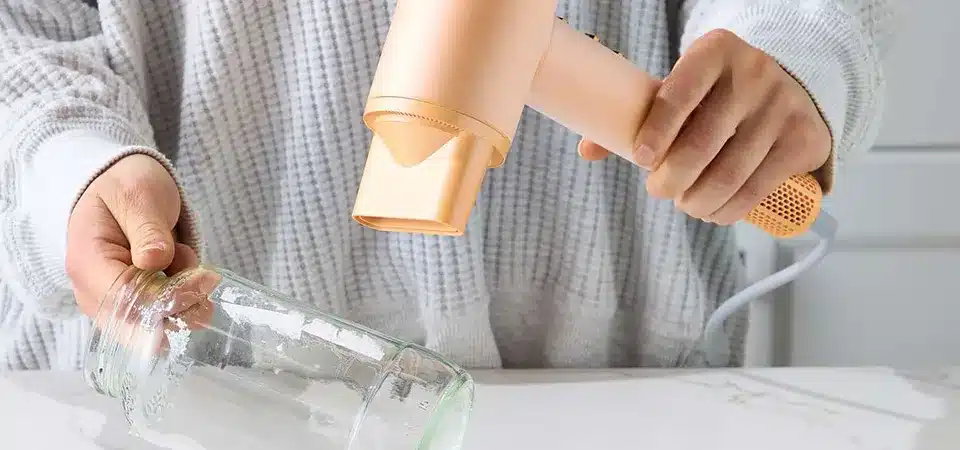
Applying heat is one of the most effective tricks in the book. As a sticker maker, I know that heat and adhesive have a close relationship. Heat helps an adhesive bond stronger, but it can also make it soft and pliable again. That's what we want here.
How to Do It Safely
- Set your hair dryer to a low or medium heat setting. High heat is risky and not necessary.
- Hold the dryer about 6 inches away from the mirror's surface.
- Keep it moving! Do not focus the heat on one single spot for too long. If you do, you risk creating thermal shock that could crack the glass, especially if the mirror is cold.
- Heat for 30-60 seconds, waving the dryer back and forth over the entire area.
After warming it up, the sticker should peel off much more cleanly. If you're working on residue that's already there, it should feel much stickier and gummier. At this point, you can often scrape it into a ball and lift it off.
Will rubbing alcohol or acetone work?
Stubborn residue isn't budging with soap or heat. You need something stronger, but chemicals can be scary. These common household items are perfect solvent solutions.
Yes, both are excellent solvents that dissolve many adhesives. Dab a small amount onto a cotton ball, let it sit on the residue for a minute, and then wipe it all away.
When gentle methods fail, it's time to bring in a solvent. Solvents work by dissolving the chemical structure of the adhesive, turning the solid gunk back into a liquid that is easy to wipe away. Rubbing alcohol (isopropyl alcohol) and acetone (the main ingredient in many nail polish removers) are two of the most effective and accessible options.
| Solvent | Strength & Use | Cautions |
|---|---|---|
| Rubbing Alcohol | Moderate. Excellent for most price tags and paper labels. It's my first choice for solvents. | Very safe on glass. It can damage some painted or varnished frames, so test first. |
| Acetone | Very Strong. Tackles super glue, permanent vinyl, and very old, hardened residue. | Can quickly strip paint and varnish. Use in a well-ventilated area. |
The method is the same for both. Apply a small amount to a cotton ball or folded paper towel and dab it onto the residue until saturated. Don't rub yet. Let it sit for a minute to do its work. You'll see the residue start to soften and dissolve. Then, wipe it away with a clean cloth.
Can a white vinegar solution help?
You prefer natural cleaning solutions. You have vinegar in your pantry but aren't sure if it's strong enough to cut through the sticky mess on your mirror.
Yes, white vinegar is a great natural option. The acetic acid in vinegar is effective at breaking down many types of adhesive. Soak a cloth and let it sit on the spot to work.
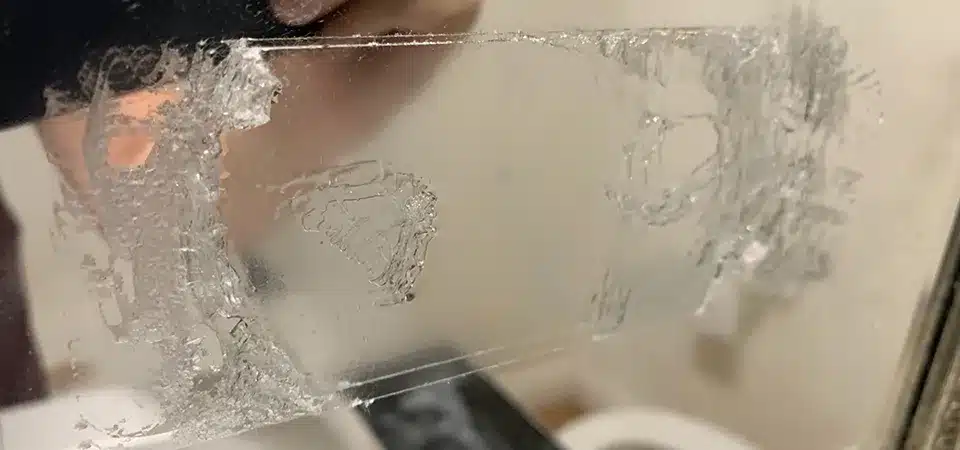
White vinegar works similarly to a chemical solvent, but it uses mild acid instead of a petroleum-based chemical. The acetic acid is fantastic at dissolving the sticky bonds of many common glues, especially the kind left behind by price tags or children's stickers. To use it, you can either use it straight or dilute it 50/50 with warm water. I find that straight vinegar works best for tougher spots. Just like with the soapy water method, the key is dwell time. Soak a paper towel or a soft cloth in the vinegar solution, place it directly over the residue, and let it sit for five to ten minutes. This gives the acid time to penetrate and break down the adhesive. After it has soaked, the residue should become soft and you can easily scrub it off with the cloth. It's a safe, cheap, and surprisingly powerful method.
Is it safe to use WD-40?
You have a can of WD-40 in the garage and know it's good for squeaky hinges. But spraying an oily substance on your mirror seems like a bad idea.
Yes, WD-40 is an excellent oil-based solvent for removing sticker residue. It's very effective at dissolving stubborn, oil-based adhesives. Spray it on a cloth first, not directly on the mirror.
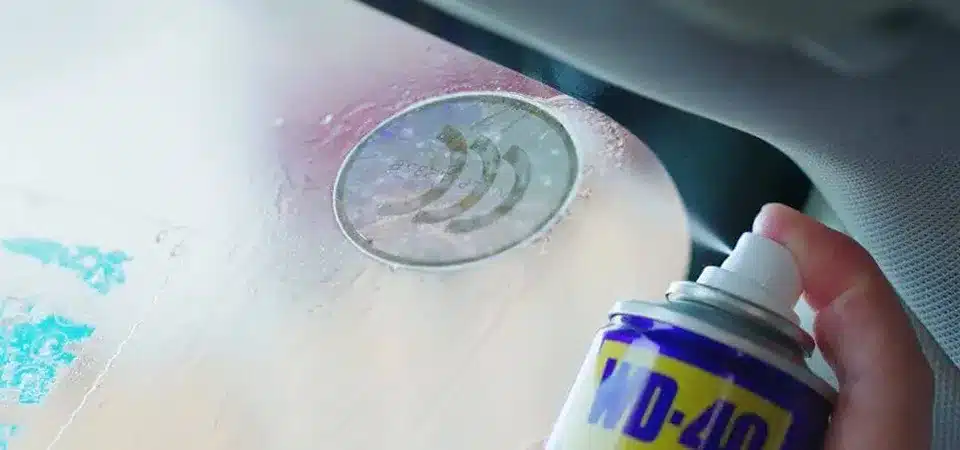
Many of the toughest adhesives we use for durable, weatherproof stickers are oil-based. To beat an oil-based glue, you need an oil-based solvent, and that is exactly what WD-40 is. It works by getting underneath the residue and breaking down its sticky components. The biggest mistake people make is spraying it directly onto the mirror. This creates a huge, oily mess that is hard to control and clean. The correct way is to spray a small amount of WD-40 onto a folded paper towel or a clean cloth. Then, rub the cloth on the sticky area. You will feel the residue start to loosen almost immediately. Once the gunk is gone, you will have an oily film left over. This is easy to clean. Just use a standard glass cleaner or some rubbing alcohol on a clean cloth to wipe away the oily film, leaving your mirror perfectly clear and streak-free.
What about Goo Gone or commercial removers?
The residue is incredibly stubborn and nothing seems to work. You're ready to try a dedicated product, but you want to make sure it's the right choice for a mirror.
Commercial removers like Goo Gone are specifically designed for this job. They are often citrus oil-based and are extremely effective. Apply a small amount and let it sit before wiping.
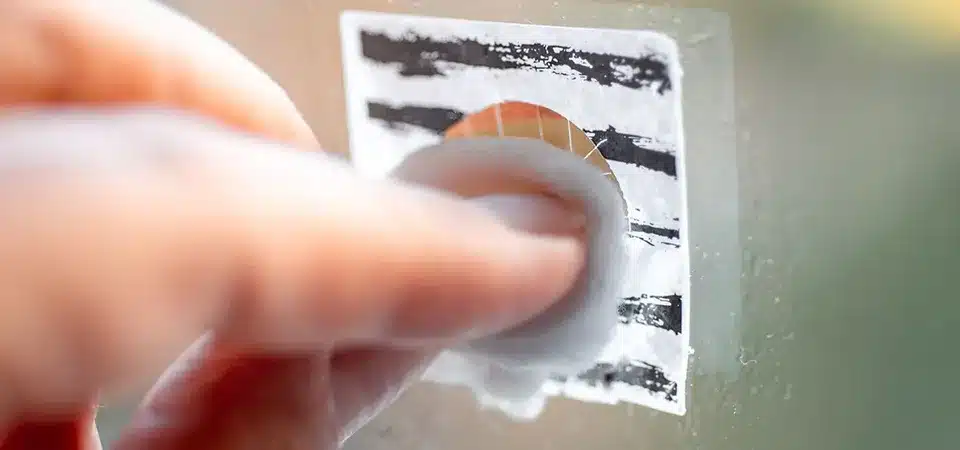
When home remedies fail, it's time for a product made for one purpose: removing sticky stuff. Goo Gone is the most famous brand, and I keep a bottle of it in my workshop. These products are usually based on citrus oil extracts, which gives them a pleasant smell and incredible power for dissolving tough adhesives. They work on almost everything, from crayon and sap to the gunk left by impossible-to-remove labels. The process is straightforward. Apply a few drops of the liquid directly to the residue. Spread it around so the entire area is covered. Now, the important part: walk away for 5-10 minutes. These products need time to work. After waiting, you can use a plastic scraper or a cloth to wipe the dissolved goo away. Just like with WD-40, you'll need to clean the oily film off afterward with glass cleaner for a streak-free finish.
Should you try the ice pack method for a fragile mirror?
You have an antique or very delicate mirror and are worried that heat or chemicals could damage it. You need a gentle method that poses zero risk to the glass or frame.
Yes, the ice pack method is a safe alternative. Press an ice pack against the residue. This freezes the adhesive, making it brittle and easier to chip or scrape off without solvents.
This method uses temperature in the opposite way a hair dryer does. Instead of making the adhesive soft and gummy, it makes it hard and brittle. This is a great choice for old or valuable mirrors where you want to avoid any risk of thermal shock from heat or potential damage to an antique frame from chemicals. Just place a few ice cubes in a plastic bag or use a small gel ice pack. Hold it directly on top of the sticker residue for several minutes. The goal is to make the adhesive so cold that it loses its stickiness and becomes hard. Once it's frozen solid, you can often use a plastic scraper, a credit card, or even your fingernail to flick or chip the brittle residue right off the surface. It may not work on all types of adhesive, but it is by far the safest physical removal method you can try.
Does a baking soda and oil paste work?
You're dealing with a thin layer of sticky film, not big chunks of glue. You need something with a little bit of texture to scrub it away without scratching the glass.
Absolutely. A paste made from baking soda and oil (like coconut or olive oil) is a fantastic gentle abrasive. The oil dissolves the residue while the baking soda helps lift it away.
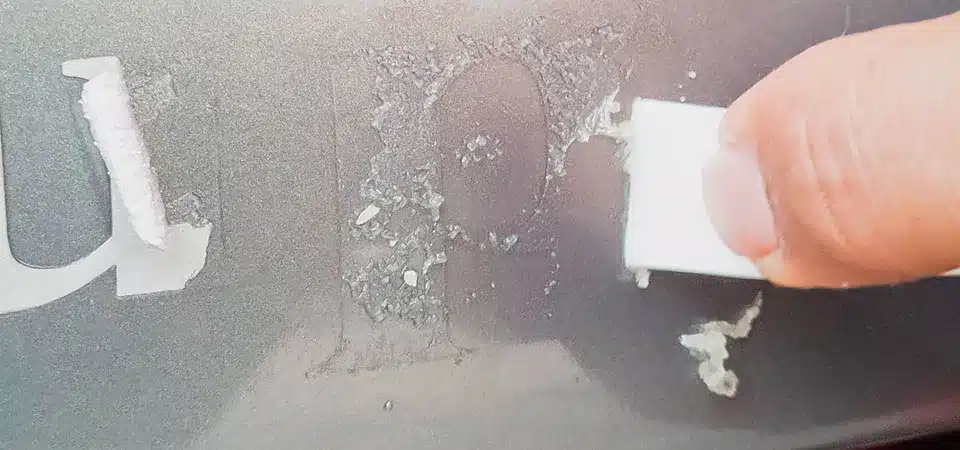
This is one of my favorite DIY solutions because it combines two actions in one. The oil works to soften and dissolve the adhesive base, just like WD-40 or Goo Gone. The baking soda acts as a very mild abrasive. It's gritty enough to help scrub the residue away but so fine that it will not scratch the glass surface. To make it, just mix equal parts baking soda and any cooking oil until you have a thick paste, about the consistency of toothpaste. Smear this paste over the sticky residue and let it sit for about 15 minutes. Then, take a soft cloth or a paper towel and rub in a gentle circular motion. The paste will start to pick up all the sticky stuff. When you're done, wipe the area clean with a dry cloth and then finish with your favorite glass cleaner to remove any oily film.
Is it safe to use a razor blade?
You have tried everything and there is still a stubborn patch of residue left. You're tempted to scrape it off with a razor blade but are terrified of leaving a huge scratch.
Yes, a new, flat razor blade is one of the most effective tools, but you must use it with extreme caution. Keep the blade flat against the glass at a very low angle to shave the residue off.
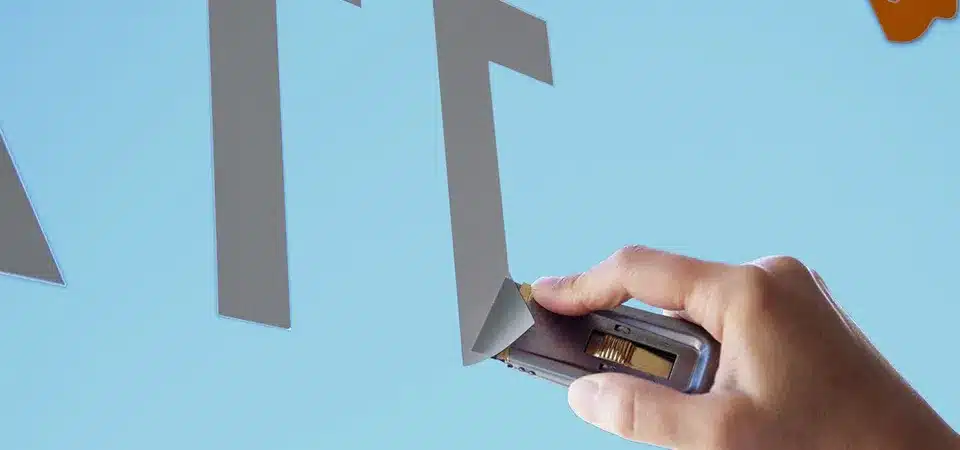
This is the final option, the last resort for the most stubborn bits of baked-on adhesive. Glass is harder than steel, so a razor blade should not scratch it if used correctly. The danger comes from a chipped blade or using the corner of the blade.
The Only Safe Way to Use a Razor Blade
- Always use a new blade. An old, rusty, or nicked blade is a guaranteed way to make a scratch.
- Lubricate the surface first. Spray the area with some soapy water or glass cleaner. This helps the blade glide smoothly.
- Hold the blade at a low angle. Never go at the glass at a 90-degree angle. You want a shallow angle, maybe 30 degrees or less. The goal is to get under the residue, not to gouge it.
- Use a single, flat edge. Don't use the corners of the blade, as they can dig in.
- Push gently and smoothly. Use short, even strokes in one direction. Don't use a back-and-forth sawing motion.
I use this method in my shop sometimes to clean equipment, and it works perfectly when you respect the tool and the technique.
What other tips help remove sticky residue?
You’ve learned the main methods. Are there any other professional tricks that can make the job easier and ensure your mirror looks perfectly clean in the end?
Yes. Always work in a small, manageable area at a time. Use a plastic scraper instead of a metal one when possible, and always finish with a quality glass cleaner for a streak-free shine.
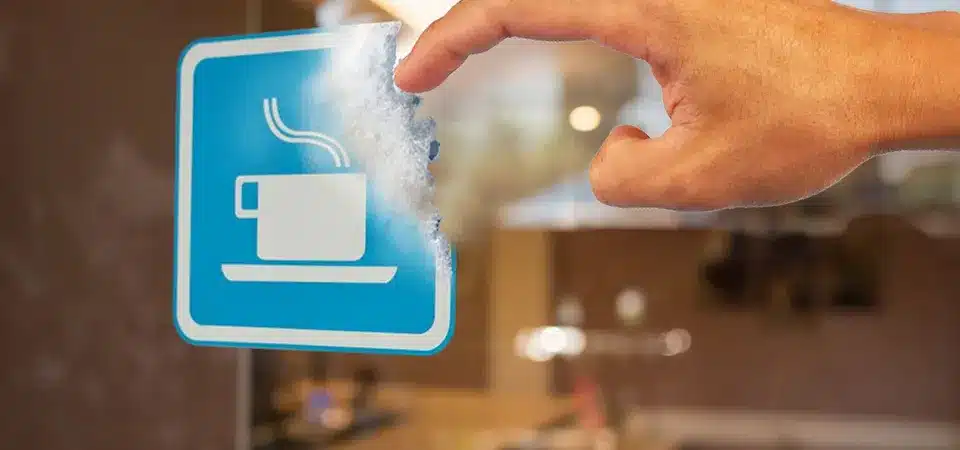
After years of dealing with stickers and adhesives, I've learned a few extra tricks that ensure a perfect result every time. These small details can make a big difference.
Professional Tips for a Perfect Finish
- Test in an Inconspicuous Spot: Before you use any chemical or oil on your mirror, especially near a painted or wooden frame, test it on a small, hidden corner first to make sure it doesn't cause any damage.
- Use a Plastic Scraper: A plastic razor blade or an old credit card is much safer than a metal blade and can be very effective, especially after you've softened the residue with heat or a solvent.
- Patience is Key: Some of these methods, especially the soaking ones, require time to work. Don't rush the process. Letting a solvent sit for ten minutes can save you ten minutes of frustrating scrubbing.
- The Final Clean: No matter which method you use, your final step should always be to clean the entire mirror with a good-quality, ammonia-free glass cleaner and a clean microfiber cloth. This removes any leftover oils or films and leaves a perfectly clear, streak-free surface.
Conclusion
To remove sticker residue, start with gentle methods like heat and soap. Escalate to solvents or a razor blade for tough spots. Patience and the right technique will restore your mirror perfectly.

